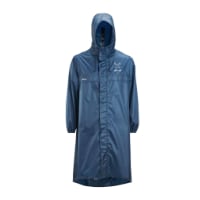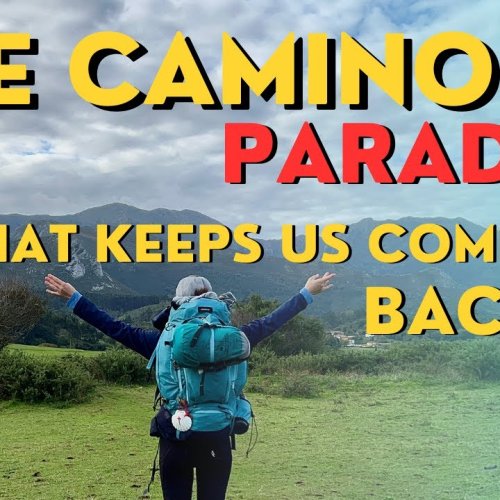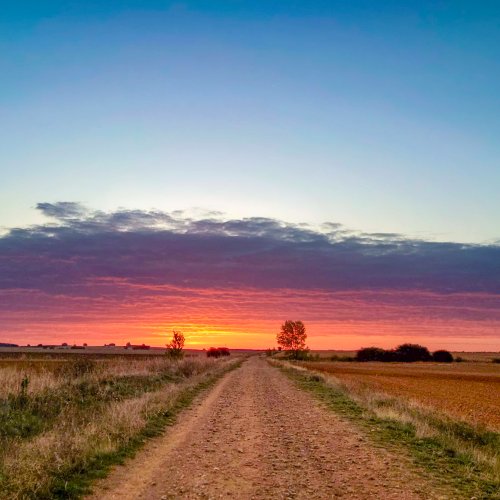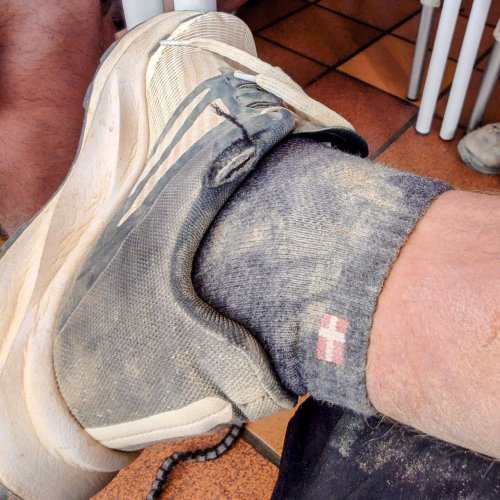Layers are not defined by name of the garment, they are defined by how you wear them.
Additionally, all garments used for layering come in all sorts of thicknesses - often referred to by terms like: Lightweight, midweight, heavy weight,. These terms help identify if a garment is better to use during seasons of hot temps, mild temps, or colder temps.
The three defined layers are:
1.
Inner layer. It is also referred to as the
Skin Layer. I always have two of these shirts; the one I wear and an extra in the backpack.
This is the layer that sits closest to your skin. Its primary job is to wick sweat away from your skin. It's secondary purpose is to contribute as best it can to warmth, but that contribution is often minimal. The primary material used in this shirt that functions the best is a poly-synthetic, like the material used in the Patagonia Capilene shirts (there are a number of similar shirts made from a poly-synthetic fabric). The other material that works best is a merino wool fabric. Smartwool is an example of a manufacturer that designs shirts using merino wool for backpackers/Pilgrims.
It's not just cold weather where long sleeved shirts are of benefit as an Inner Layer. In mild to hot temperatures the Inner Layer is often the only layer you wear. Often these garments will come in thicknesses that match a given temperature range. This works to help with both hot or cold weather.
When only wearing an inner layer because of warm to hot temperatures, an inner Layer with long sleeves acts to protect the skin on your arms from the effects of direct radiation of the sun's
UV and
infrared radiation, preventing sunburn. This is also helps keep you cooler. Long sleeves do not allow the skin to bake in infrared heat. This is one strategy of desert dwellers to help stay cooler.
I never take short sleeves shirts because I want long sleeves to help keep me warm or cool as needed. If I want shorter sleeves, I just push the long sleeves up to expose of my forearm below the elbows.
The inner layer is often presentable on its own to wear casually as a shirt when dining, shopping, church.
2.
Mid Layer. Also referred to as the
Insulating Layer, its primary function is to trap heat and keep you warm. What you use as a Mid Layer dependent on the season of use and also the lowest average temperature likely to be encountered.
An example of this is the middle of the Fall season. Sometimes it will be warm to even hot, but it will also be chilly to the point of an early morning frost and stay mildly chilly all day. For this season, I prefer using a down vest
like this one by Cotopaxi.
***See below prior to any "wet down is bad" comments
With a down vest, I get the best weight to warmth ratio, a highly compactable garment, and when combined with the long sleeves of an inner layer shirt (or shirts, if needed) get the core body warmth I need while providing good protection to my arms.
If I were to choose a long sleeved Mid Layer instead, it would be a very lightweight down jacket/Puffy.
The colder the Season, then it is a puffy jacket with a hood and heavier down fill. If I were to use a synthetic hoody, then I would use something like the Patagonia R1 Air. Or if a Fleece, something similar to the Rab Capacitor Fleece Hoody.
If Temperatures are just a bit chilly but not rainy, then an Inner Layer and Mid Layer is all you need to wear.
3.
Outer Layer aka the Weather Layer. The primary purpose of this layer is to protect your inner layer from getting wet. In cold winter weather, it protects from letting snow melt on you and soaking your inner layers, as well as adding warmth.
For most pilgrims walking during Spring thru Fall, rain is the weather protection focus. And in this discussion, will be the most polarizing of what to use. . . Poncho vs. Rain jackets-Pants.
In the category of Pro's and Con's, I will let those who strongly prefer Rain Jackets to list their reasons, as I am biased toward Ponchos. Why?
A poncho is also far more easily deployed. Since I can pull it out of the side pocket of my backpack and slip it on over my backpack, I do not even have to stop. I usually do pause for the ten seconds it takes to put on, though, because I am a bit clumsy

I never need to take my backpack off, put on a rain jacket, then put the backpack back on.
This is a huge factor for me when it rains because as is often the case, rain will be sporadic: it will rain off and on during the walk. Periodic sprinkles and showers can eat up a lot of time and energy with a rain jacket IF you take the rain jacket off and put it back on based on the immediate conditions.
With a poncho, I can respond to conditions within seconds. I can whip off the poncho as soon as the rain has slowed or stopped, and not question "should I wait to see if it starts back up?" Removing the poncho as needed keeps condensation inside the poncho way down.
A poncho can work equally as well, and even more flexibly, as a temporary outer layer. The same quickness to deploy and remove a poncho works well in trying to avoid unexpected wind chill. And if the morning is cool as I start to walk, but I know I will be warm after a short walk, simply putting the poncho on for a few minutes and then whipping it off works well to avoid overheating.
On the aesthetics side, rain jackets do have the edge. . . depending on how important is the form as a factor with regard to function.
And ponchos are far more multitasking than a rain jacket.
- A shelter lean-to. A bit of cord and trekking poles make it even more independent in setting up.
- A sun shelter, it can be rigged up to provide you shade in hot climates.
- Ground cloth: Under a tent, or a survival shelter, a poncho can protect you from the damp ground. If you are in a cold damp climate, this can help you stay warm.
- Wind Break: While a poncho without the liner does not have much insulating qualities, you will be warmer if you wrap up in the poncho in windy weather, this will help protect you from wind chill.
- Privacy -- great emergency privacy screen when needing to do some 'elimination' business and natural coverage of bushes or tall grass is scarce. It also works when needing to change pants or shorts.
- Sit pad. When taking a break and sitting surfaces are damp.
- Mattress cover.
- Can make an emergency backpack or carryall.
- Windshell to add a bit of extra warmth to layers. Great for cool, early mornings when you need something that can be quickly removed after you have warmed up from walking.
- etc
Hopefully this can be helpful to you and others.
*** For those concerned about the loss of insulation if down gets wet or damp, a lot has changed in the last 5 years. Most down or feather insulation undergoes a hydrophobic treatment. This means that it works when damp or wet, because the down and feathers tend to just shed the water or water vapor your body produces. It works quite well, actually.
I have tested this on various garments from vests to parkas, as well as sleeping bags and backpacking quilts. I did this by dunking them into water and squishing the trapped air out while the garment was under the water. Then I removed the garment, wrung out the water as best I could, and put it on to see how much warmth is retained. This was either done in the dead of winter at a snow camp near a high mountain lake where I could bust the ice to get to the water. Or it was done in the dishwashing sink belonging to a butcher I know that let me 'borrow' his walk-in freezer kept at minus 20F / minus 29C.















